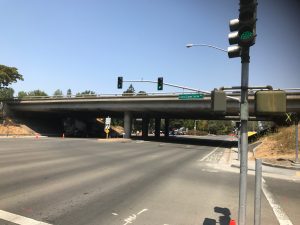
An article from the Washington Post:
“Can hackers take over traffic lights?” by Faiz Siddiqui (Washington Post, August 8, 2015)
A brief excerpt:
But it was the District that captured the attention of Cesar Cerrudo, chief technology officer of IOActive Labs, an Argentina-based security research firm. Cerrudo walked the streets of Capitol Hill last year with a tracking device, seeking to expose vulnerabilities in the District’s traffic system as part of a nonprofit initiative. He has done the same in New York and other cities, usually with similar results, he said.
Cerrudo said he was able to access traffic data at intersections at Union Station, Capitol Hill, and at Third and Madison streets NW. Were he a malicious hacker, he said, he could have gridlocked the entire city, creating paralyzing traffic on North Capitol Street NW or turning neighborhood roads into bona fide freeways.
UPDATE
Related article in The New York Times:
“Traffic Hacking: Caution Light Is On,” by Nicole Perlroth, New York Times, June 10, 2015
This is Cesar Cerrudo’s detailed technical talk at DEFCON 22 on his investigation of traffic control systems covered in the articles:
This is the website of Sensys Networks, the traffic control system discussed in the articles and video above.
(C) 2017 by John F. McGowan, Ph.D.
About
John F. McGowan, Ph.D. solves problems using mathematics and mathematical software, including developing gesture recognition for touch devices, video compression and speech recognition technologies. He has extensive experience developing software in C, C++, MATLAB, Python, Visual Basic and many other programming languages. He has been a Visiting Scholar at HP Labs developing computer vision algorithms and software for mobile devices. He has worked as a contractor at NASA Ames Research Center involved in the research and development of image and video processing algorithms and technology. He has published articles on the origin and evolution of life, the exploration of Mars (anticipating the discovery of methane on Mars), and cheap access to space. He has a Ph.D. in physics from the University of Illinois at Urbana-Champaign and a B.S. in physics from the California Institute of Technology (Caltech).
